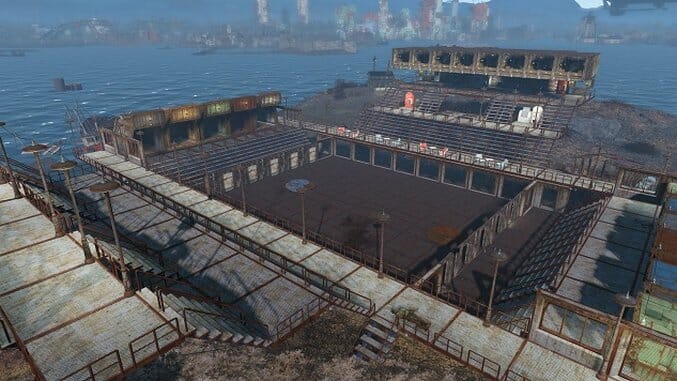The 5 Most Important Items from Fallout 4‘s Wasteland Workshop DLC

Should I get the Wasteland Workshop for Fallout 4? If you find yourself asking that question, this rundown is for you. The DLC adds a number of new items to the settlement workshops, which join those brought in during update 1.4 to give a dash of Sims to your Fallout 4 experience. Is it worth your $5? Check out the top five additions to the settlement workshops before you decide.
5. Garden Plot
Probably one of the bigger issues with spacing in Fallout 4 settlements is crop placement. It is very hard to establish uniform spacing between plants, making it difficult to maximize every square foot of a settlement. On top of that, some settlements have very little dirt for planting crops, leading to a shortage of both food and jobs for your settlers. The garden plot, a small patch of earth that can be put over concrete or uneven land, will solve that problem by providing more places for you to plant.
4. Neon Lettering
Neon lettering is mostly an aesthetic addition to Fallout 4, but it’s a nice one nonetheless. I use it to label rooms and buildings, spruce up a decorative area, or name some of the bars and pubs I’ve created across the Commonwealth, like The Party Bus, a top level concessions area at a settlement I call Spectacle Stadium, which you can see below. Your settlers of course will pay no attention to the signs, but they’re still fun.
3. New Lighting Items
Count this among the many “no-brainer” additions to the Wasteland Workshop. Along with the update issued just prior to Wasteland Workshop, a number of reused assets finally made their way to the settlement workshop menu. Did you see a lamp or painting in a building somewhere in the Commonwealth and wonder why you can’t use it? Well now you can. And if you’re one of those folks that likes to decorate, you’ll love the variety of new options. My favorite is the table lamp seen below.






